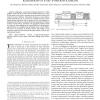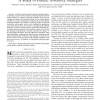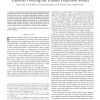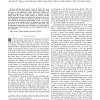TROB
2010
14 years 7 months ago
2010
TROB
2010
14 years 11 months ago
2010
—High-gain proportional–integral–derivative (PID) position control involves some risk of unsafe behaviors in cases of abnormal events, such as unexpected environment contacts...
TROB
2010
14 years 11 months ago
2010
—We propose a novel framework, passive set-position modulation (PSPM), which enables us to connect a (continuoustime) robot’s position to a sequence of slowly-updating/sparse (...
115
click to vote
TROB
2010
14 years 11 months ago
2010
Abstract—This paper presents a new methodology for the analysis and control of internal forces and center-of-mass (CoM) behavior, which are produced during multicontact interacti...
109
Voted
TROB
2010
14 years 11 months ago
2010
Abstract—Modular robotic systems typically assemble using deterministic processes where modules are directly placed into their target position. By contrast, stochastic modular ro...
TROB
2010
14 years 11 months ago
2010
Abstract—Localization, which is the determination of one’s location in a known terrain, is a fundamental task for autonomous robots. This paper presents several new basic theor...
TROB
2010
14 years 11 months ago
2010
103
click to vote
TROB
2010
14 years 11 months ago
2010
—To efficiently solve challenging motion-planning problems with dynamics, this paper proposes treating motion planning not just as a search problem in a continuous space but as ...
129
click to vote
TROB
2010
14 years 11 months ago
2010
—Robotic systems need to be able to plan control actions that are robust to the inherent uncertainty in the real world. This uncertainty arises due to uncertain state estimation,...
109
click to vote
TROB
2010
14 years 11 months ago
2010
—Starting from human ‘sense of touch’, this work reviews the state of tactile sensing in robotics. Following a brief discussion on the physiology, coding, tactile data transf...




